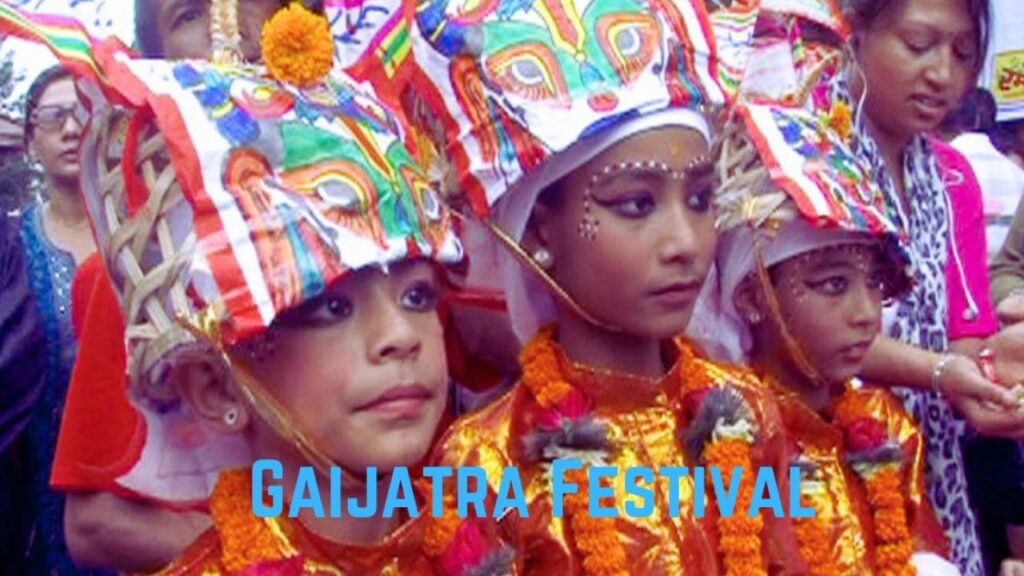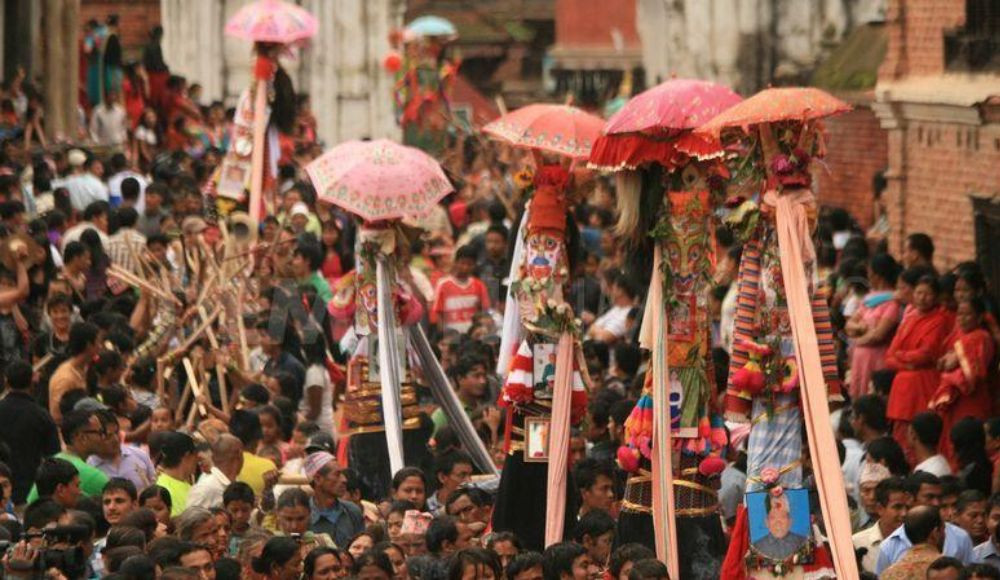
Janai Purnima Festival
 On the occasion, especially Hindu Brahmins and Chhetris who have undergone the ritual of Bratabandha change their Janai (white cotton string worn diagonally from the left shoulder to the right waist) and also tie the Raksha Bandhan around the wrist of the right hand.
On the occasion, especially Hindu Brahmins and Chhetris who have undergone the ritual of Bratabandha change their Janai (white cotton string worn diagonally from the left shoulder to the right waist) and also tie the Raksha Bandhan around the wrist of the right hand.
People believe that the use of the sacred thread will bring them good luck. It is also believed that the Raksha Bandhan should be removed only on the day of Laxmi Puja during Tihar.
Janai Purnima is also popularly known as Raksha Bandhan.
On this day, sisters also tie Rakhis, a wrist band as a symbol of protection, on their brothers’ hands, with a belief that it will bring security to their brothers.
People celebrate the festival eating kwati (soup cooked from germinated pulses) and other special food items.
Gaijatra Festival
 Gaijatra, one of the most popular festivals of the Newar community of Kathmandu valley, was celebrated with fanfare today as the living kin paid homage to those who had passed away in the past one year.
Gaijatra, one of the most popular festivals of the Newar community of Kathmandu valley, was celebrated with fanfare today as the living kin paid homage to those who had passed away in the past one year.
Gaijatra falls on the first day of the waning moon in Nepali month of Bhadra.
People flock to open areas in Kathmandu, Bhaktapur and Lalitpur districts – the major residential areas of the Newari people – to commemorate the deceased family members.
People from Newar community residing across the country such as Dhulikhel, Pokhara, Palpa, Baglung, among other traditional Newari settlements also celebrated the festival. The festival is observed mainly by the Newari community. However, people from other communities have also started participating in the processions of late. Young boys from the family whose loved ones had died in the past one year take to the streets with painted faces, while some present themselves in the attire of a cow. The barefoot participants clad in strange and humorous costumes, all part of the traditional celebration, join the public function on the street.
The historic festival, which literally signifies the festival of cows, is marked with various dance and drama performances, while the bereaved families along with bystanders offer fruits, bread, beaten rice, curd, money, among other items to those participating in the procession. Actual cows are also brought out in the rally as it is believed that cows help the deceased soul make their way to heaven safely and cleanse all the bad deeds (karma).

One of the core motives of the festival is to make merry to compensate for the grief of losing loved ones.
The festival is believed to have started during the reign of King Pratap Malla (1641– 1674) in a bid to console his grieving wife who was distraught by the death of their son, Chakravatendra Malla.
Since then, the residents of Kathmandu valley whose loved ones in the family had died in the past one year, started to participate in the procession to celebrate the good memories of the departed family members.
Gaijatra also has powerful social significance in the contemporary days. The festival, which started as merrymaking, is also celebrated as an occasion to make sarcastic remarks against social malpractices and the dirty game of politics. Various revered comedians, cartoonists and satirical writers also take the opportunity to satirise politicians and other public figures on this day.